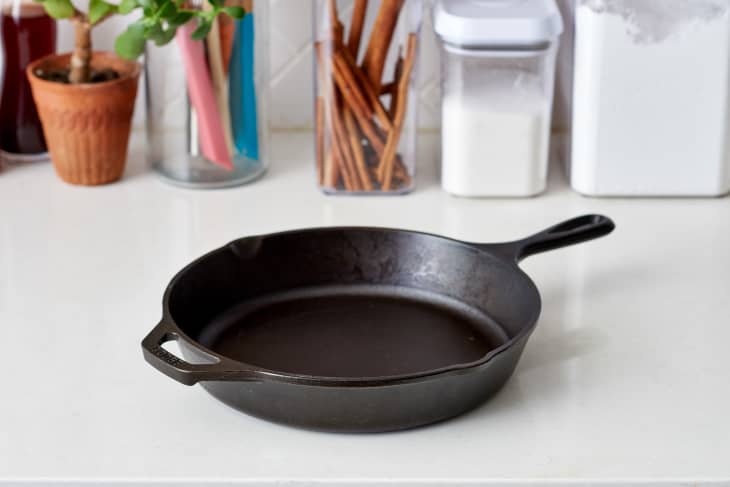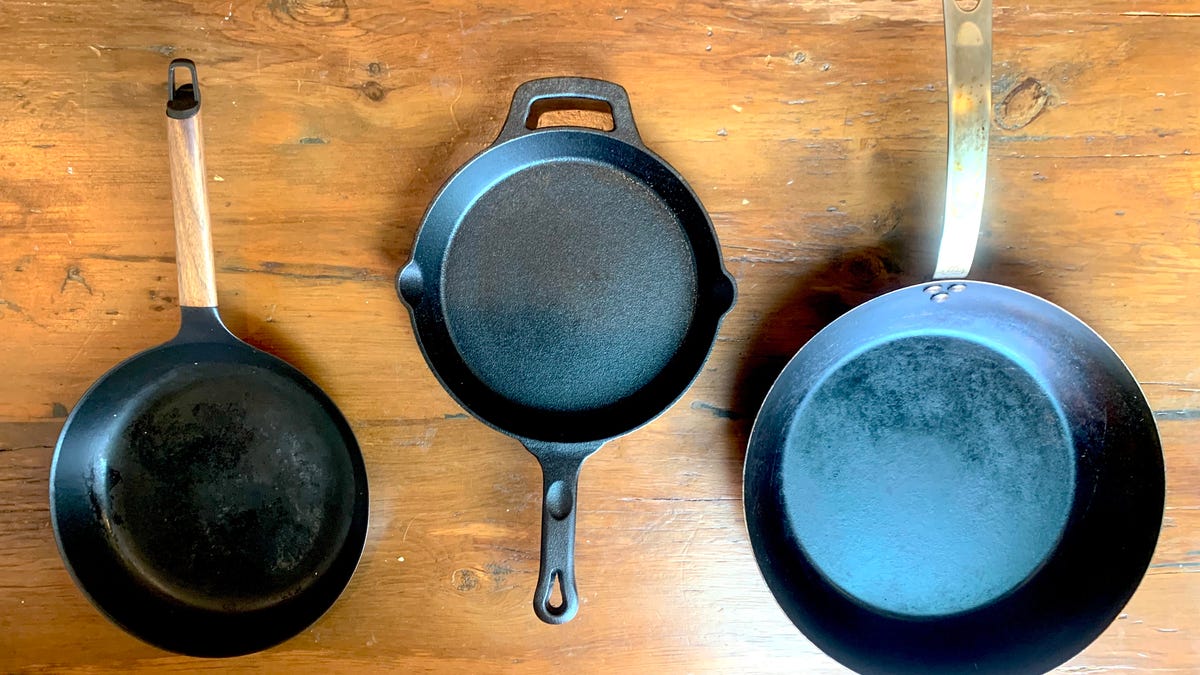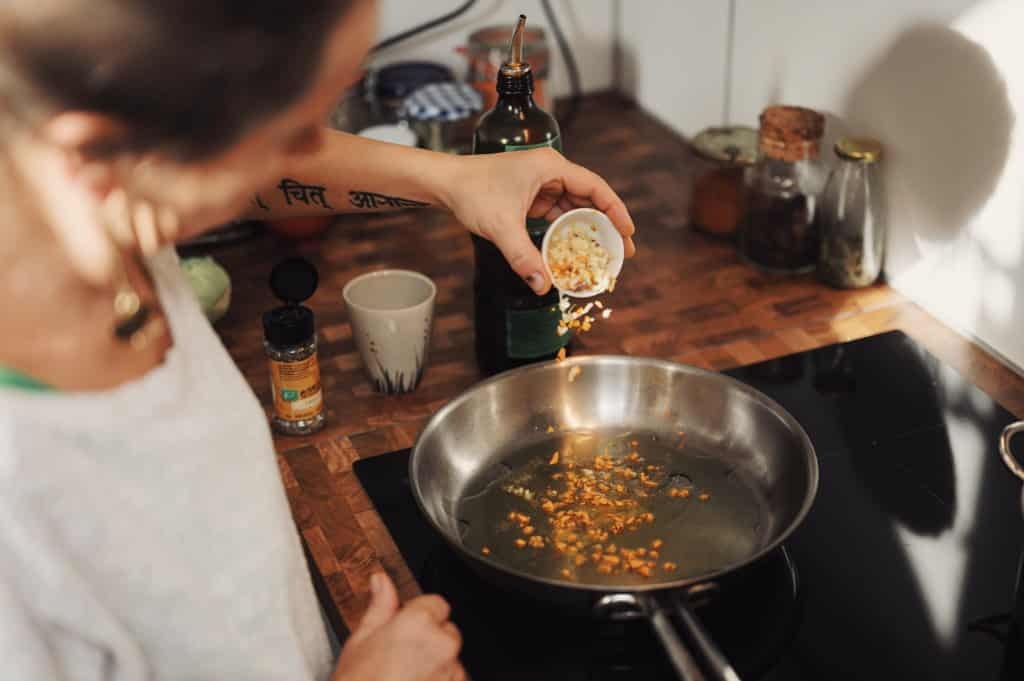Burning a cast iron skillet can be an intimidating yet necessary process for kitchen professionals. How to burn a cast iron skillet effectively requires understanding the heating process and methods to accomplish this without damaging the skillet or creating excess smoke. Professional kitchens often face challenges with cast iron cookware, especially when it comes to maintaining their quality and appearance. In this article, we dive deep into the methods and best practices for burning a cast iron skillet, what to avoid, and tips for keeping your cookware in prime condition.
Your cast iron skillet is a valuable tool, cherished for its durability and heat retention. As kitchen experts, you know the importance of maintaining these skillets, and sometimes that means learning how to burn away old seasoning or residues. Knowing how to do this properly can be the key to maintaining a well-seasoned cooking surface.
:max_bytes(150000):strip_icc()/1-TheSpruce_CamrynRabideau1-c5e33b19b848450c903729034e6e4949.jpg)
Understanding the Importance of Burning a Cast Iron Skillet
Burning a cast iron skillet typically involves heating it at a high temperature to remove old, built-up seasoning or stubborn residues. This process is crucial as it prepares the pan for re-seasoning, ensuring optimal cooking conditions. When dealing with cast iron, professionals often face the issue of accumulated seasoning which can lead to uneven cooking and undesirable flavors.
Why Burn a Cast Iron Skillet?
- To remove unwanted flavors and residues
- To prepare the skillet for re-seasoning
- To prevent rusting and pitting
- To maintain peak performance of the skillet
Step-by-Step Guide on How to Burn a Cast Iron Skillet
Now lets dive into the detailed methods of how to burn your cast iron skillet effectively.
1. Preheat Your Oven
Before starting the burning process, preheat your oven to around 500F. This high temperature is essential for effectively burning off old oils and residues. If you have a heat-resistant skillet, this method can be very effective.
2. Line the Bottom Rack
Line the bottom rack of your oven with aluminum foil. This will catch any smoke or seasoning that may come off the skillet during the burning process. It's important to ensure your oven is clean before starting.
3. Place the Skillet Upside Down
Position your skillet upside down on the middle rack. This ensures that any smoke produced during the process escapes instead of accumulating inside the skillet.
4. Monitor the Process
Check the skillet periodically for smoke or burning odors. Depending on the buildup, the burning process can take anywhere from 1 to 2 hours. Make sure your kitchen is well-ventilated to prevent smoke buildup.
Post-Burning Care for Your Cast Iron Skillet
After the burning is complete, its crucial to let the skillet cool down naturally in the oven. Once cooled, you can proceed to clean it using appropriate cleaning methods. This can include wiping it down with a cloth or using mild dish soap for stubborn residues.
Why Regular Maintenance is Key
Kitchen professionals understand that proper maintenance extends the life of your cookware. Regularly assessing your skillet's seasoning can prevent the need for burning it too frequently. Cleaning it after every use and reapplying the seasoning can prolong its longevity.
Useful Techniques for Seasoning Your Skillet
Once your skillet is burned and cleaned, its time to re-season it. Here are some effective techniques:
1. Choose the Right Oil
Choose oils with high smoke points like flaxseed oil or canola oil. These oils provide a durable seasoning layer. Apply a thin layer to the interior surface of the skillet.
2. Bake for Better Results
After applying the oil, place the skillet back in the oven upside down to bake for about an hour at 450F. This method not only helps the oil bond with the cast iron but also creates a robust flavor layer for future meals.
Common Mistakes to Avoid
When learning how to burn a cast iron skillet, there are several common pitfalls that kitchen professionals should be wary of:
- Not preheating the oven adequately
- Ignoring ventilation, leading to smoke buildup
- Undertaking the burning process without protective gear
When to Seek Professional Help
If your skillet has significant pitting, rust, or cannot be restored through burning, it may be time to seek professional assistance or consider acquiring a new skillet. Investing in high-quality cast iron will always yield the best results.

FAQs on Burning and Maintaining Cast Iron Skillets
1. How often should I burn my cast iron skillet?
Burning should only be necessary when there is significant buildup on your skillet that cannot be reduced through normal cleaning methods. Regular maintenance can often eliminate the need for this step.
2. Can I use a different method instead of burning?
Yes, you can use methods such as boiling water in the skillet to loosen stuck food or seasoning, but burning is the most effective approach for older skillets.
3. Is it normal for a cast iron skillet to smoke?
Yes, some smoking is normal when the skillet is burned or seasoned, particularly if there's significant buildup on the surface. Proper ventilation will help manage this.
As an Amazon Associate, I earn from qualifying purchases.






Leave a comment
This site is protected by hCaptcha and the hCaptcha Privacy Policy and Terms of Service apply.